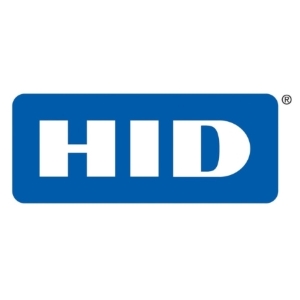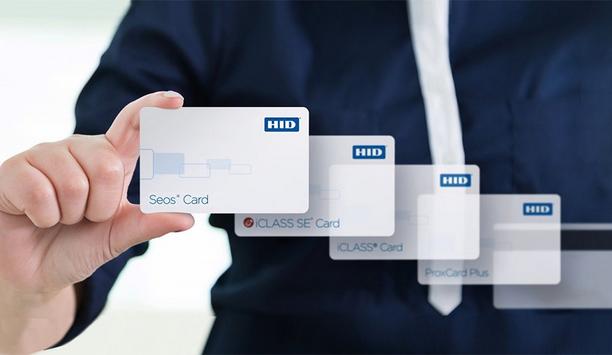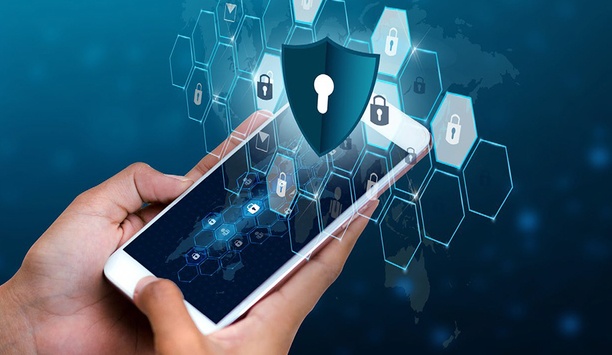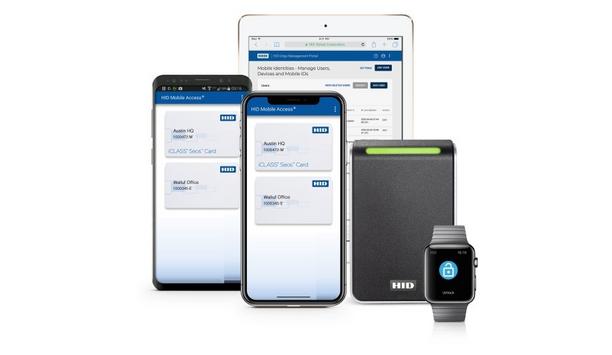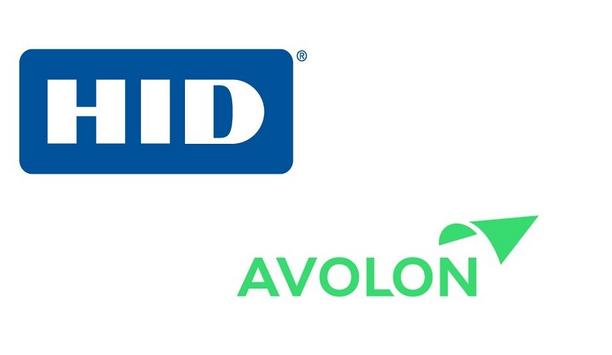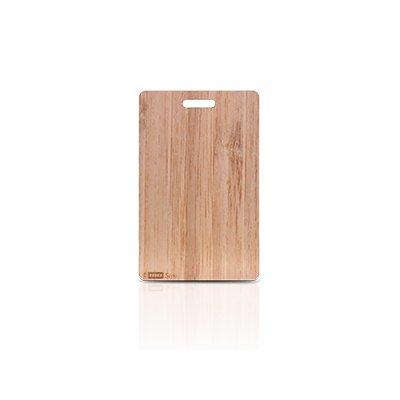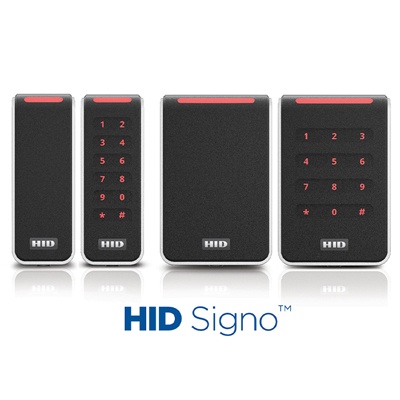HID - Experts & Thought Leaders
White papers from HID
Physical access control in higher education
DownloadA brief history of access control credentials
DownloadThe 2020 State of Physical Access Control Report
DownloadFinancial institutions require future-ready physical security technologies
DownloadPhysical security supports a future-proof cyber security strategy
DownloadThe 2024 state of physical access trend report
DownloadThe truth behind 9 mobile access myths
Download6 good reasons to embrace mobile credentialing
DownloadThree essential reasons to upgrade your access control technology in 2022
DownloadThe role of access control in a safe return to the workplace
DownloadPhysical access control in higher education
DownloadA brief history of access control credentials
DownloadThe 2020 State of Physical Access Control Report
DownloadFinancial institutions require future-ready physical security technologies
DownloadPhysical security supports a future-proof cyber security strategy
DownloadThe 2024 state of physical access trend report
DownloadThe truth behind 9 mobile access myths
Download6 good reasons to embrace mobile credentialing
DownloadThree essential reasons to upgrade your access control technology in 2022
DownloadThe role of access control in a safe return to the workplace
DownloadLatest HID news & announcements
Enhancing enterprise security is high on the list of priorities for businesses across sectors. Within the retail industry, there is an additional focus on enabling new ways of working through management tools. Integrated solutions and applications help to create a robust security landscape and ensure a future-ready posture as organisations look to address emerging risks and create better experiences for next-gen employees. Physical access control (i.e., the readers on the door and the credentials that individuals present to them for authentication) is not only one of the first interactions employees have with security technology but is also the first line of defence in security programs. Good user experience The balance of a good user experience and strong security is critical, though striking that balance has been a challenge historically as security teams are tasked with prioritising safety and protection. Innovative companies who want to go beyond traditional access control have found the balance of a frictionless user experience and strong security in mobile access solutions. Żabka is one of the largest European retail companies with 7000 locations across Poland Żabka is one of the largest European retail companies with 7000 locations across Poland and the Czech Republic. Innovation is in its DNA and the organisation is known as an early adopter. From introducing AI to create an autonomous and checkout-free shopping experience to launching a cloud-based platform to better the franchise management process, Żabka has actively embraced continuous change and improvement. When implementing security for its new headquarters in Poznań, Poland, Żabka returned to its pioneering roots, requiring a highly secure, automated solution that enabled the integration of custom applications and simplified the use of other building-wide office functionalities. Physical security components Żabka’s vision included seamless access starting at building entrances with employees using their mobile phones to ‘badge’ into the building. From there, the same mobile credential would unlock turnstiles, authenticate floor access in elevators, track time and attendance and release documents at shared printers. Most importantly, user data would need to be secured via encryption and authentication through appropriate access keys with the introduction of new users being completely under Żabka’s control. The implementation of an ecosystem with multiple capabilities — including a migration from plastic cards to mobile identities, surveillance tools, access management, and physical security components to underpin the entire solution — also necessitated collaboration between partners who shared Żabka’s spirit of modernisation and vision for a seamless user experience. Traditional plastic credentials Żabka’s comprehensive ecosystem utilises digital access control processes The project team included HID Global who managed the transition from traditional plastic credentials to mobile identities, with Zonifero to develop a custom mobile app, and Cynergy to complete the installation of hardware and embedded components. Żabka’s comprehensive ecosystem utilises digital access control processes and integrated surveillance tools with a security management platform enabling Żabka to migrate completely to the use of mobile identities. The move to HID Mobile Access has changed the experience of employees, visitors, HR, and security administrators by accelerating and automating access control management for the entire building. Integrated surveillance tools Mobile identities, contactless employee onboarding, touchless visitor management, time and attendance, and integration with the security system of the entire building are now aggregated and facilitated within the smartphone app. Security administrators remotely managed a pool of allocated mobile identities The ability to manage the access control system from anywhere with no physical contact was especially valuable. Launched amid the pandemic, the new infrastructure enabled Żabka employees to maintain social distancing and limit contact through automatic and remote activation of access. Security administrators remotely managed a pool of allocated mobile identities and individual access to users’ devices, thereby solving the problem of storing physical cards, facilitating credential transfers, issuing new credentials in the case of lost or damaged ones, and deactivating cards in the event they were lost or stolen. Mobile identity functionalities Żabka implemented mobile access on a large scale with mobile IDs in use by about 800 employees. The retailer also plans to implement further mobile identity functionalities, such as opening parking lot gates, making cafeteria purchases, and seamlessly logging in to computers. Steve is responsible for leading and coordinating demand generation programs and channel marketing activities for HID's Physical Access Control Solutions (PACS) business area in Europe. He has over 20 years of experience working in B2B marketing, 15 of which have been in the safety and security industries.
Founded in 2010, Avolon is the third-largest aircraft leasing company in the world with 824 aircraft and 145 customers in 62 countries. Its new global headquarters in Dublin is comprised of 6,967 sq m (75,000 sq ft) of secure office space across six floors that houses its IT, catering, legal, and communications departments. Need for a centralised monitoring solution Avolon’s new premises in the upmarket Ballsbridge area of Dublin provided an opportunity for the company to rethink its approach to building security. Avolon was looking for an innovative, flexible solution that could be personalised to individuals, easily accessed, and managed remotely. Additional requirements included: the need to provide different levels of security clearance in different areas of the building, the ability to manage individual security clearances, the facilitation of access outside of the usual workday, and secure parking lot access for employees and visitors. As a global company, Avolon wanted a solution that could be deployed worldwide to provide a consistent experience for its employees, regardless of their location. HID’s flexible access control solution Powered by Seos® technology, the solution uses BLE and iCLASS® readers to create a secure access control solution Avolon partnered with systems integrator Summit Security Systems Ltd and deployed HID Mobile Access at its Dublin headquarters. Powered by Seos® technology, the solution uses Bluetooth Low Energy (BLE) and iCLASS® readers to create a secure, convenient, and flexible access control solution for its headquarters. The building’s security system enables credentials on smartphones via an app rather than on physical access cards and uses iCLASS SE® mobile-enabled readers installed at points of access. Key benefits of a mobile access system include: Employees are less likely to forget smartphones, which they always carry than an access badge Security clearances are more efficient and easily changed because security status is provisioned to an app A cloud-based central control system provides security administrators with easy oversight, access to a complete set of metrics, and the ability to manage a network of premises around the globe Employing various access control measures Avolon has implemented a range of different solutions for different parts of its premises that can vary by time of day. For example, elevators utilise access control measures to ease the flow of people within the building during work hours, while assuring that after-hours access is more controlled. Employees simply twist their iOS or Android™ phones when they approach the parking readers to gain entry The ease-of-use and security also extend to the parking lot, which benefits from HID’s “Twist and Goes” feature. Employees simply twist their iOS or Android™ phones when they approach the parking readers to gain entry. Avolon encourages its employees to cycle to work and has extended mobile access to a secure employee bike parking area that links directly into the shower and changing facilities. Advantages of mobile access solution The HID Mobile Access Solution provides many advantages over the previous card-based system including after-hours access (vital to a 24/7 business like Avolon), ready access to secure rooms, and easy management of security clearances. With HID Mobile Access, fine-grained security access for a global network of offices is controlled centrally through a cloud-based portal. Access levels can be set on an individual basis so they are very flexible and can be modified as needed. “Using a mobile phone is much more convenient than access cards. People forget their access cards, but their mobile phone is with them all the time,” said Allan Dawson, facilities project manager at Avolon. “It’s much more efficient. For example, we now have much lower instances of people leaving the perimeter and having to ask for re-entry because they’ve left their pass in the office.” Worldwide installation of physical access solution In the future, Avolon anticipates expanding its new physical access solution across its global campuses. “As well as deploying in our Dublin head office we have also deployed in our New York, Florida, and Hong Kong offices,” said Dawson. “The benefit of using a global platform means our people can travel between offices with their security status intact and ready to go for each location.”
HID, pioneer in trusted identity and access management solutions, announced the launch of HID Integration Service, a platform that integrates physical security, cybersecurity and digital identity management. This integration platform-as-a-service (IPaaS) was designed to empower application developers, solution integrators and software vendors to seamlessly and rapidly integrate essential physical security solutions, streamlining processes and enhancing system interoperability. Integrations between physical and cybersecurity systems The platform aims to ease the burden of care and upgrades associated with managing physical security By doing so, the platform aims to ease the burden of maintenance and upgrades associated with managing and implementing integrations between physical security and cybersecurity systems, thereby lowering costs, streamlining operations and significantly reducing implementation time. "Organisations have long struggled with brittle, complex integrations and the costs to maintain them," said Martin Ladstaetter, senior vice president and head of Identity and Access Management Solutions at HID. Top benefits of HID Integration Service Ladstaetter added: "HID Integration Service eliminates these pain points by providing an integration platform that connects physical and digital security products, reducing time to market for development partners who are building the next generation of security solutions with greater speed, quality, resilience and value." HID Integration Service directly addresses the top benefits security pioneers seek from unified management solutions—improved efficiencies, simplified management and enhanced visibility—helping them: Reduce operational complexities and maintenance costs. Deliver new security capabilities faster into tailored industry solutions. Simplify security touchpoints through streamlined user experiences. Key features include: A comprehensive integration layer that scales from point-to-point connections into multi-party integrations Pre-built integrations that accelerate deployment and reduce development costs Scalability and security to support rapidly evolving business needs HID's new integration platform capabilities Each brings deep expertise and robust capabilities across various security domains HID is privileged to have a few early adopters on the platform. Each brings deep expertise and robust capabilities across various technologies, verticals and security domains. "We are excited about HID's new integration platform capabilities, which we believe can only add to SwiftConnect's ability to meet our customers' expectations and broader needs in the commercial real estate and enterprise markets," according to Matt Kopel, co-founder and co-CEO of SwiftConnect. "The alignment of vision and direction between our companies will enhance and multiply the business changes our customers are pursuing," continued Kopel. RemotePhoto's AI workflow “We envision a world where ID photos magically arrive in their intended location without human intervention,” said Luke Rettstatt, chief executive officer of CloudCard. “To realise this vision, we must develop and maintain many integrations, which is daunting for a small team. HID Integration Service allows us to focus on RemotePhoto's AI workflow rather than building and maintaining certified integrations with third parties.” HID’s 2025 State of Security and Identity Report This growing demand for seamless integration and efficiency is reflected in HID’s 2025 State of Security and Identity Report. According to the report, 67% of security leaders are actively transitioning to software-driven security solutions, with nearly three-quarters of organisations considering unified data collection critical to their operations.
Insights & Opinions from thought leaders at HID
In the physical security marketplace, artificial intelligence (AI) has evolved beyond the novelty phase. The emphasis has now shifted to the more practical aspects of implementing AI technology. That a system implements AI is no longer impressive in and of itself. The question becomes: What can this AI system do for me? How can it improve my physical security stance? We asked our Expert Panel Roundtable: How is artificial intelligence (AI) transforming physical security?
In many cases, architectural design and layout dictate optimal placement of security devices like cameras, access control readers, and sensors. Poor design can lead to blind spots, reduced coverage, and ineffective surveillance. However, planning that involves all the various stakeholders can maximise both security and design elements. We asked this week’s Expert Panel Roundtable: When are building design and physical security systems complementary? When are they at odds?
March is Women in Security Month, a time dedicated to celebrating and promoting the contributions of women in the security field—particularly in cybersecurity. This observance aligns with Women’s History Month, providing an opportunity to reflect on the progress made and the work still needed to advance gender equity in security. Evolving role of women in security The security industry has witnessed a steady increase in women's participation. According to ISC2 Research in its “Women’s Role in Filling the Workforce Gap” report, women make up an estimated 20 to 25 percent of the security industry. Promisingly, younger generations are entering the profession at higher rates, with 26 percent of working professionals under 30 identifying as women. The security industry has witnessed a steady increase in women's participation The research tells us that women are thriving in a variety of roles, from engineering and system administration to sales, marketing, and project leadership. Key factors driving this transformation include mentorship programs, male allies advocating for gender equality, and cultural shifts recognising the unique perspectives and strengths women bring to security challenges. These efforts are fostering more inclusive environments and ultimately strengthening the industry. The value of diverse perspectives in security Security is not a one-size-fits-all industry—each organisation and facility has unique needs that require varied perspectives. Greater representation of women has introduced fresh approaches to problem-solving, fostering collaboration and driving innovation. By integrating diverse viewpoints, security professionals can create more effective solutions that better address end-user needs. Industry support for women’s professional growth SIA's WISF offers subcommittees such as NavigateHER, SupportHER, and UpLiftHER Organisations like the Security Industry Association (SIA) and ASIS International have established networking platforms and initiatives to support women in security. Events such as the Security LeadHER Conference provide valuable professional development and networking opportunities. Companies are also investing in science, technology, engineering, and mathematics (STEM) initiatives, hands-on training, and recruitment programs to attract more women into the field. Additionally, SIA's Women in Security Forum (WISF) offers subcommittees such as NavigateHER, SupportHER, and UpLiftHER, which provide pathways for engagement and growth. Challenges women in security face Despite progress, challenges remain. Many women still feel it necessary to repeatedly prove their expertise, take on additional informal responsibilities, or carefully navigate workplace dynamics. Imposter syndrome can be another hurdle, even for accomplished professionals. However, women in security are addressing these challenges by setting boundaries, advocating for themselves, and supporting one another through mentorship. By excelling in leadership and technical roles, women are reshaping outdated perceptions and advocating for more inclusive workplace policies. Steps industry pioneers can take To further support women in security, industry pioneers could: Provide targeted professional development and career advancement opportunities. Foster strong, supportive communities that recognise and mentor women. Implement structured mentorship programs that connect experienced professionals with newcomers. Promote workplace flexibility to help employees balance personal and career commitments. Actively challenge biases and advocate for meaningful change within organisations. Advice for women entering the security field Here are key pieces of advice for women considering a career in security: Own Your Expertise – Have confidence in your knowledge and skills. Seek Out Mentors & Allies – Connect with supportive professionals who can guide your career. Build a Strong Network – Join organisations like ASIS Women in Security, SIA Women in Security Forum, or Women in CyberSecurity (WiCyS), and attend industry events to expand your connections. Speak Up & Take Space – Confidently share your ideas and challenge outdated norms. Develop Resilience & Advocate for Yourself – Push past biases, demand the respect you deserve, and negotiate for fair salaries and promotions. Keep Learning & Stay Ahead – Continually build your expertise to stay competitive in the evolving security industry. The future of women in security As the security industry evolves with technological advancements and global changes, opportunities for women will continue to expand. Women are not just participating in the industry’s growth—they are shaping its future. With growing mentorship programs, male allies advocating for gender equality, and ongoing cultural shifts, the focus is no longer just on breaking barriers but on building bridges to new opportunities.
The ultimate guide to mastering key control
DownloadUsing artificial intelligence (AI) to automate physical security systems
DownloadA modern guide to data loss prevention
Download7 proven solutions for law enforcement key control and asset management
DownloadThe truth behind 9 mobile access myths
Download